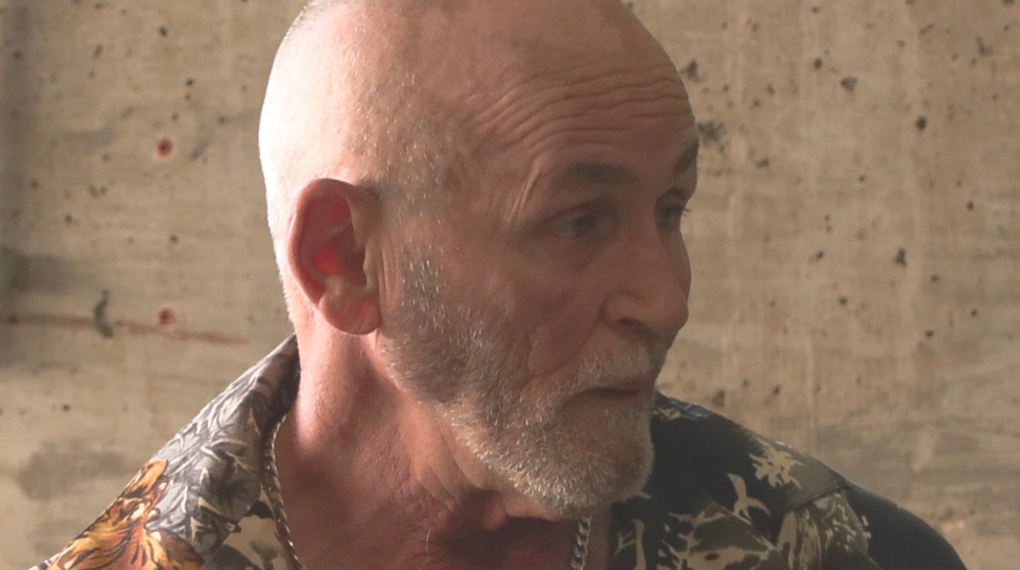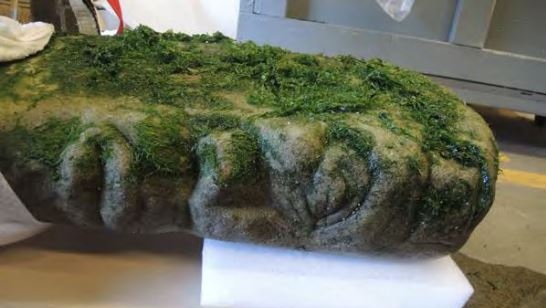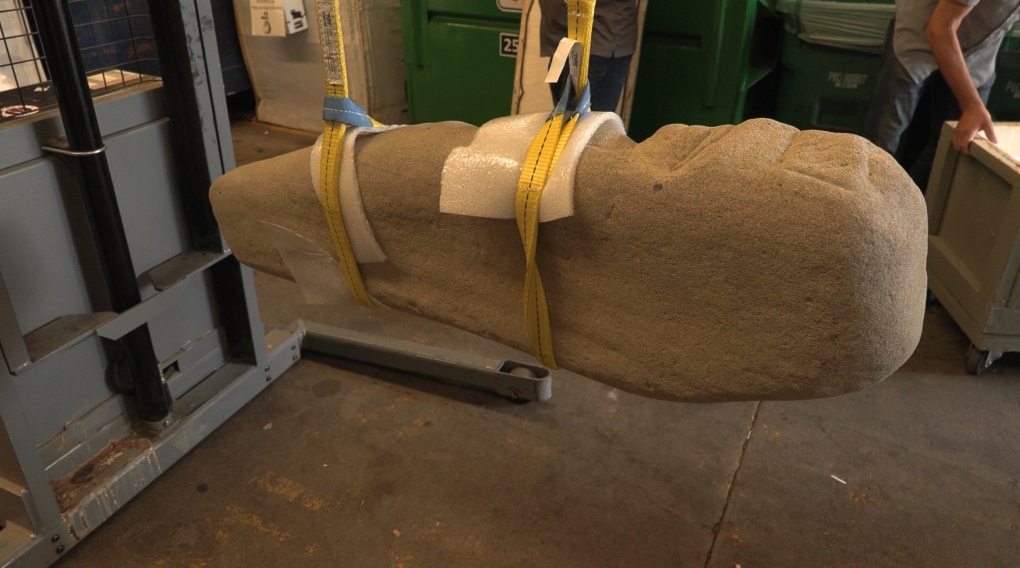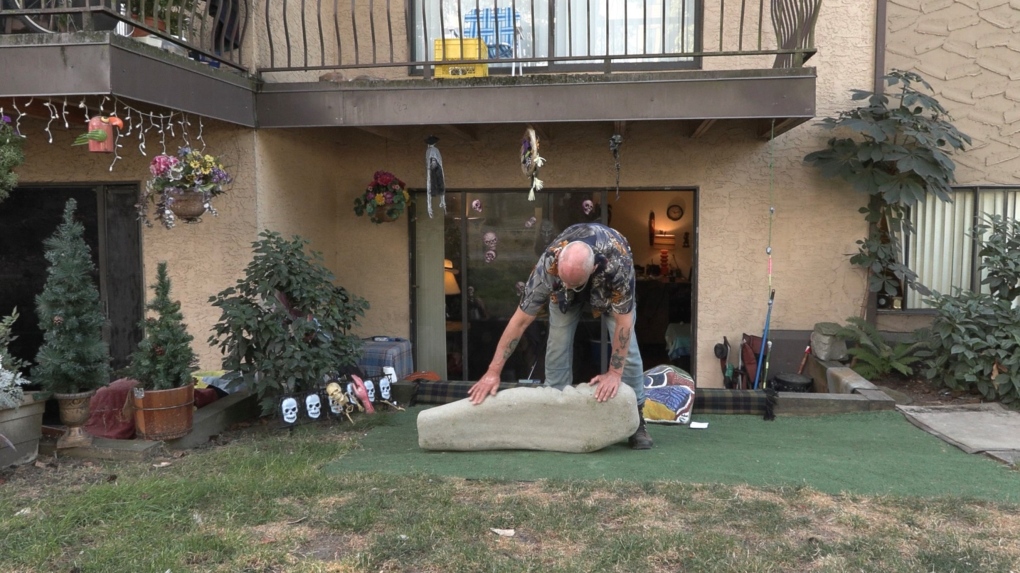Royal B.C. Museum apologizes after 2017 carving declared ancient Indigenous artifact
The Royal British Columbia Museum apologized Tuesday and admitted for the first time that one of its artifacts is not, in fact, a centuries-old Indigenous stone monument, as museum curators had claimed.
Rather, the stone was carved five years ago by a Victoria hobbyist with no ties to local Indigenous culture, despite the museum's grand assertions about the stone's historic significance to the First Peoples of Vancouver Island.
The museum clung to that ancient-origin story until Tuesday, when staff met with the local carver in the museum's underground loading dock and forklifted the stone into the back of his car to finally take home.
In a letter of apology, museum CEO Alicia Dubois said she was "relieved and pleased" to see the artwork returned to its rightful owner.
"I would like to express my gratitude for your patience as we navigated this unfamiliar territory and extend sincere apologies for the errors made during the process," Dubois wrote.
"I assure you that as a team, we have learned from this experience and are taking concrete measures to ensure similar errors are not made in future."
ORIGINS OF THE CARVING
It was raining in Victoria in January 2017 when Ray Boudreau, a night watchman for a security company, went to the beach with the carpenter's hammer and chisel he kept in the trunk of his car.
He had tooled leather bibles before, but never solid rock. Nonetheless, he found a piece of sandstone – weighing in excess of 100 kilograms – at the bottom of the bluff and started carving the human face that would go on to dupe researchers at B.C.'s foremost repository of natural and human history.
When Boudreau returned to the beach days later to finish his carving, the rock was gone. He figured someone took it, but more likely it was carried out to sea by a surging winter tide.
That's where it was recovered three years later by Grant Keddie, then curator of the Royal B.C. Museum's Indigenous collections and repatriation department, after receiving a tip about a strange carving spotted in the surf at low tide.
 Artist Ray Boudreau at the Royal B.C. Museum on Tuesday, Sept. 13, 2022. (CTV News)
Artist Ray Boudreau at the Royal B.C. Museum on Tuesday, Sept. 13, 2022. (CTV News)
'VERY SPECIAL RITUAL STONE PILLAR'
Internal communications obtained by CTV News show that Keddie and his team quietly set to work on restoring the carving and preparing a permanent gallery display for the "ritual stone pillar."
The planned installation would feature the carving set upright within a display case to "show the figure as it would have been seen centuries ago, partly in the ground," Keddie wrote in an email to a colleague.
The partially redacted documents, obtained through B.C.'s access-to-information law, proved the museum disregarded warnings about the carving's authenticity and pressed ahead with plans to present the stone as a watershed discovery for Indigenous culture in the province.
 The stone carving, shortly after it was recovered in July 2020, at the Royal B.C. Museum. (RBCM)
The stone carving, shortly after it was recovered in July 2020, at the Royal B.C. Museum. (RBCM)
Six months later, the museum issued a news release and published a lengthy article announcing the discovery of a "very special ritual stone pillar" that had been hewn centuries ago by the Indigenous inhabitants of southern Vancouver Island.
The announcement made national headlines and stoked excitement in the archaeological community.
But within 48 hours of the announcement, Boudreau, the carver, showed CTV News photos of his carving, which bore a striking resemblance to the carving the museum believed was used centuries ago "to change the weather" during seasonal ceremonies.
When CTV News published Boudreau's account of the carving later that day, the museum immediately scrubbed all mention of the discovery – including its press release, photographs and a lengthy essay written by Keddie, the curator – from its website without explanation.
Indeed, in the months that followed, all of Keddie’s research would be erased from the museum website, along with his employee profile and contact information.
Keddie, who had served as a leading curator at the museum for decades, was also removed from the B.C. government's staff directory, which lists contact information for current provincial employees.
 The carving is lifted into the back of a vehicle at the Royal B.C. Museum on Tuesday, Sept. 13, 2022. (CTV News)
The carving is lifted into the back of a vehicle at the Royal B.C. Museum on Tuesday, Sept. 13, 2022. (CTV News)
Spokespersons for the museum declined to comment on Keddie's departure on Tuesday, saying only that it was a human resources matter.
At no point during the two years when the carving sat in a crate in the museum's basement did anyone at the institution try to contact Boudreau about his claim.
'A LONG TIME COMING'
Keddie's departure was just the latest in a series of recent, high-profile exits among museum staff. Those exits include the ouster of president and CEO Jack Lohman amid a third-party investigation into workplace racism and mismanagement, and the voluntary departures of two Indigenous collections curators.
Janet Hanuse, the museum's vice-president of engagement and implementation of the Declaration on the Rights of Indigenous Peoples Act, would not say specifically what errors were made in the curatorial process or how the final determination of the artifact's origin was reached.
"It underwent some sort of investigation but then it stopped," Hanuse told CTV News. "There's been a lot of attention around it and I personally don't like things left unfinished so I'm happy to see closure."
 Ray Boudreau takes his carving home from the Royal B.C. Museum for the first time since creating it in 2017. (CTV News)
Ray Boudreau takes his carving home from the Royal B.C. Museum for the first time since creating it in 2017. (CTV News)
Leaving the museum with his carving Tuesday, Boudreau said he had "mixed feelings" about finally getting the artwork back all these years later, but he vowed to finish the carving as he intended.
"It's been a long time coming," Boudreau said. "But it would have been cool to visit it here at the museum and say, 'I did that.'"
CTVNews.ca Top Stories

Minister 'outraged' after AFN national chief's headdress taken from Air Canada cabin
The federal minister of Crown-Indigenous relations is calling on Air Canada to 'make things right' with the national chief of the Assembly of First Nations, who said her headdress was removed from an airplane cabin during a flight this week.
Sophie Gregoire Trudeau on navigating post-political life, co-parenting and freedom
Sophie Gregoire Trudeau says there is 'still so much love' between her and Prime Minister Justin Trudeau, as they navigate their post-separation relationship co-parenting their three children.
BREAKING Stranded orca calf swims out of B.C. lagoon where she was trapped for weeks
An orca whale calf that has been stranded in a B.C. lagoon for weeks after her pregnant mother died swam out on her own early Friday morning.
'Violation': CSIS had officer investigated after she reported a superior raped her
A CSIS officer's allegations that she was raped repeatedly by a superior in agency vehicles set off a harassment inquiry, but also triggered an investigation into her that concluded the alleged attacks were a “misuse” of agency vehicles by the woman.
'Too young to have breast cancer': Rates among young Canadian women rising
Breast cancer rates are rising in Canada among women in their 20s, 30s and 40s, according to research by the University of Ottawa (uOttawa).
'I was scared': Ontario man's car repossessed after missing two repair loan payments
An Ontario man who took out a loan to pay for auto repairs said his car was repossessed after he missed two payments.
Canada recognizes housing as a human right. Few provinces have followed suit
As more Canadians find themselves struggling to afford or find housing, the country's smallest province is the only one that can point to legislation recognizing housing as a human right.
Charlie Woods, son of Tiger, shoots 81 in U.S. Open qualifier
Charlie Woods failed to advance in a U.S. Open local qualifying event Thursday, shooting a 9-over 81 at Legacy Golf & Tennis Club.
Taylor Swift dons Montreal designer's dress in 'Fortnight' video
A pair of Montreal designers' work has now been viewed over 41 million times. Taylor Swift dons a Victorian throwback black gown in her latest music video, 'Fortnight', designed by UNTTLD due Simon Belanger and Jose Manuel Saint-Jacques.
































